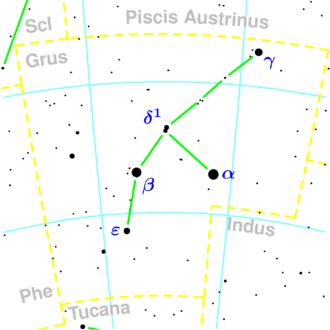NGC 7166
| Galaxy NGC 7166 |
|
|---|---|
|
|
|
| AladinLite | |
| Constellation | crane |
|
Position equinox : J2000.0 , epoch : J2000.0 |
|
| Right ascension | 22 h 00 m 32.9 s |
| declination | -43 ° 23 ′ 23 ″ |
| Appearance | |
| Morphological type | SA0 ^ - |
| Brightness (visual) | 11.8 mag |
| Brightness (B-band) | 12.8 mag |
| Angular expansion | 2.40 x 0.9 |
| Position angle | 14 ° |
| Surface brightness | 12.7 mag / arcmin² |
| Physical data | |
| Affiliation | SSRS Group-38 NGC 7166-Group NGC 7162-Group LGG 449 |
| Redshift | 0.008226 ± 0.000080 |
| Radial velocity | 2466 ± 24 km / s |
|
Stroke distance v rad / H 0 |
(110 ± 8) x 10 6 ly (33.7 ± 2.4) Mpc |
| history | |
| discovery | John Herschel |
| Discovery date | September 5, 1834 |
| Catalog names | |
| NGC 7166 • PGC 67817 • ESO 288-027 • MCG -07-45-004 • 2MASX J22003292-4323232 • SGC 215727-4337.8 • GALEX ASC J220032.84-432321.0 • LDCE 1494 NED003 | |
NGC 7166 is a Lenticular Galaxy of the Hubble-Type E / S0? in the constellation crane in the southern sky . It is estimated to be 110 million light-years from the Milky Way and about 80,000 light-years across. Together with the pair of galaxies NGC 7162 / PGC 67818 , it forms an optical trio.
The object was discovered by John Herschel on September 5, 1834 .
